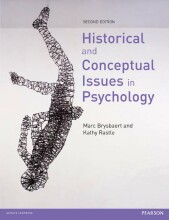Reading and mathematics in developmental psychology
39 important questions on Reading and mathematics in developmental psychology
How do we call a writing system to describe an aspect of writing, or spelling?
How do we call a writing system in which written symbols correspond to spoken sounds?
What is a similarity of Vygotsky's theory and Piaget's theory and what is a difference between them?
- Higher grades + faster learning
- Never study anything twice
- 100% sure, 100% understanding
How do we call a language that relies heavily on syllables for meaning?
How do we call a rhythmic unit in a language like japanese or tamil that is the equivalent of a syllable?
What is a syllable?
How do we call the smallest unit of a word whose pronunciation forms a rhythmic break when spoken?
What is the difficulty of the alphabet and phonemes for children?
How do we call the ability to detect and manipulate sounds at the phonetic, syllabic and intra-syllabic levels?
What was a problem when people started producing the alphabet?
How do we call a unit of speech that is smaller than a syllable, but larger than a phoneme?
What was proven in the study of Morais (1979, 1986) where Portugese adults had to do the deletion task?
How do we call the consonant, or cluster of consonants or vowel at the beginning of a syllable?
What are phonological skills?
What are onsets and rimes and to which unit do they belong?
How do we call rules that determine that a letter, or group of letters represent one sound in a specific setting, and another sound in a different context
What does the relationship between phoneme awareness and rhyme indicate?
How do we call a non-existing, but pronuncable word?
How do we call it when an orthography has spelling rules based on phonemes and also on morphemes and the way these are spelled?
Why was Reads study on invented spelling revolutionary?
How do we call morphemes that create new words by being added to the end?
What is an orthography like English instead of just a phonemic script?
What are derivational morphemes?
How do we call affixes whose presence or absence tells you important information about a word?
What are inflectional morphemes?
How do we call the principle that a set of items is quantitively equal to a set of different items with the same amount?
What are the three steps in learning morphemic spelling rules?
2. Learning another way of spelling this sound, at first using it without understanding when you should use it
3. Learning the rule for the use of the sound because of feedback
How do we call the principle that numbers come in an ordered scale of magnitude, 1 is smaller than 2, 2 is smaller than 3, etc?
What does lack of phonemic awareness play an important role in?
How do we call a set of principles that must be obeyed in order for our number systems to work?
How do we call the principle that states when counting a set of object one object needs to only be counted once?
How do we call the principle that number words must be used only in one specific set order?
How do we call the principle that the last number of the counting sequence represents the quantity of the counted set of items?
How do we call the principle that the number of items in a set is independent of the qualities of the items in a set?
How do we call the principle that the order of counting the items in a set does not affect the number of items in the set?
How do we call routines or procedures applied to solve a problem?
Why is reading difficult for children?
How is phonemic awareness illustrated?
Describe McCrinck and Wynne's experiment on addition and subtraction?
- addition; five objects drop in the screen, small screen rises to cover them
- 5 extra objects come in from the side to go behind the screen as well
- screen lifts up to reveal either 5 or 10 objects
- substraction; 10 objects drop down, screen rises to cover
- 5 objects come from behind the screen, go off screen
- screen lifts up to reveal either 5 or 10 objects
- surpise, and looking time at impossible events shows ability to count
The question on the page originate from the summary of the following study material:
- A unique study and practice tool
- Never study anything twice again
- Get the grades you hope for
- 100% sure, 100% understanding
































